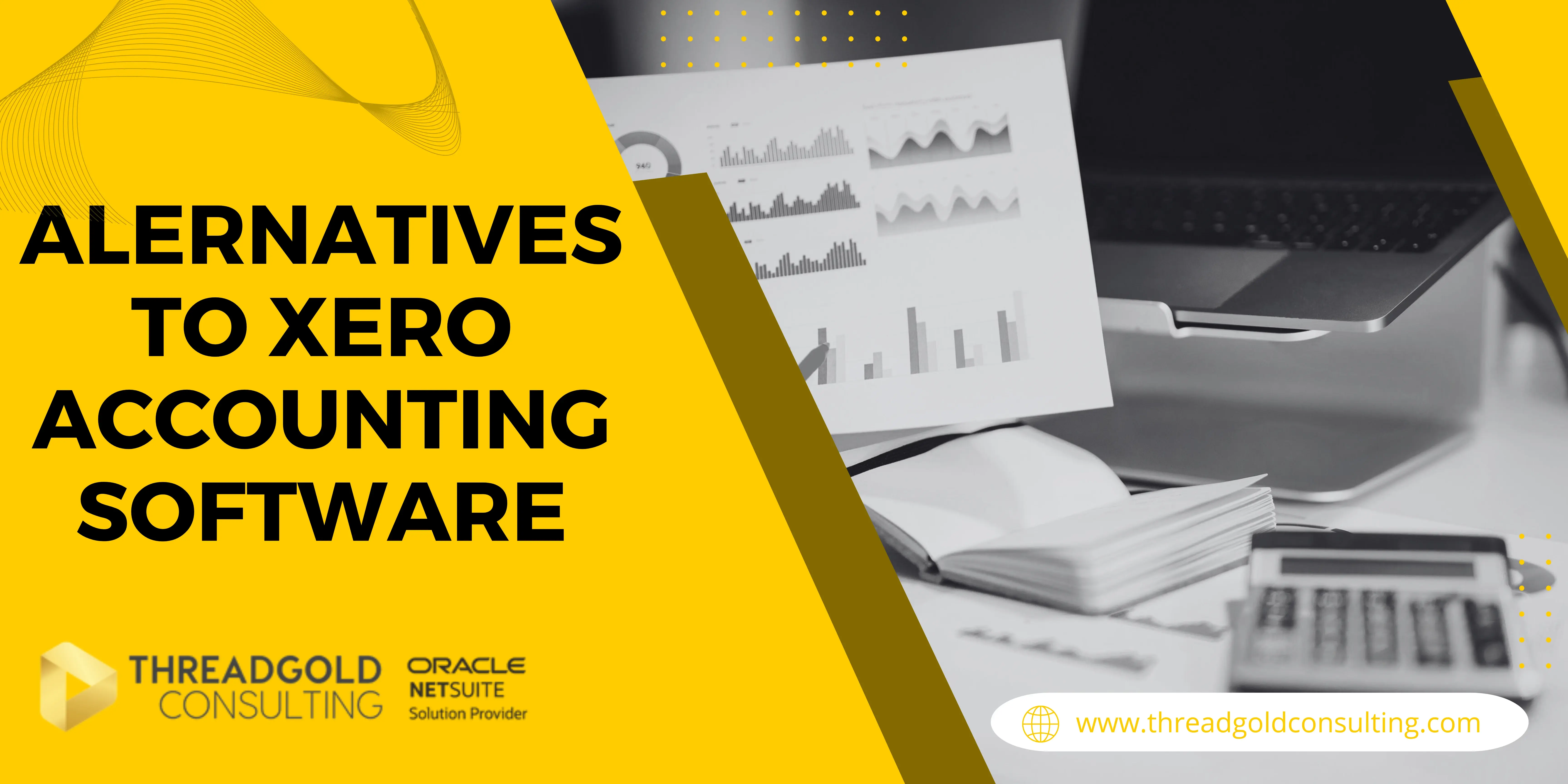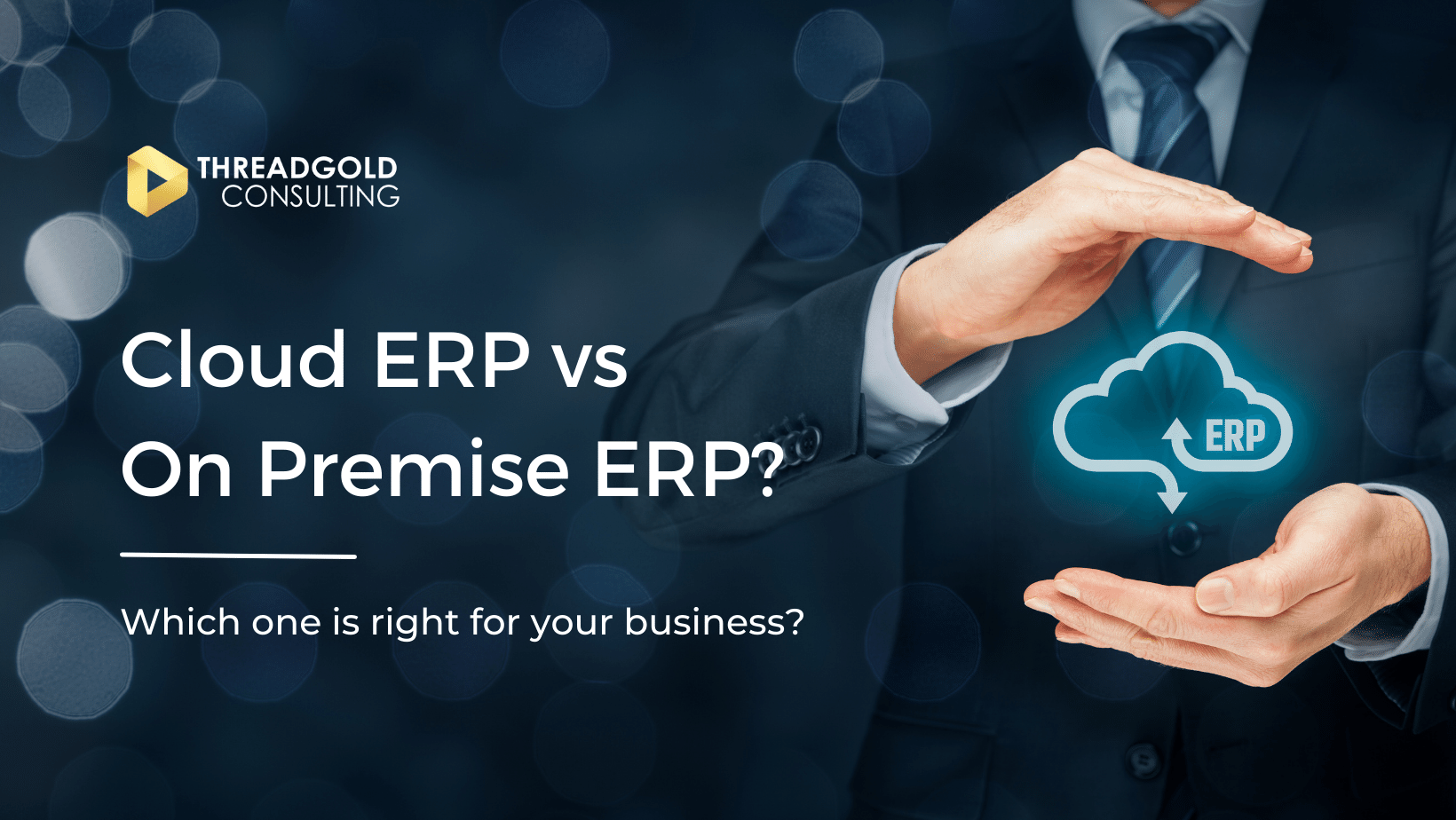When it comes to accounting software, Xero is a favored option. It's cost-effective, provides solid functionality, and is user-friendly. However, it primarily caters to small businesses and lacks certain features that some businesses might require. If you're seeking an alternative to Xero, it's probably because it doesn't offer sufficient functionality and/or your business has outgrown it.
In such cases, upgrading to an ERP system is likely the best choice due to its extensive functionality and customization capabilities. Depending on your business requirements, it's wise to explore alternatives that might offer more specific features, varied pricing, or enhanced scalability. Here’s an overview of some leading Xero competitors to help you find the right match.
Oracle NetSuite
Oracle NetSuite is a highly customisable ERP solution designed for larger businesses with complex needs. It offers a comprehensive accounting module along with tools for inventory management, CRM, and eCommerce. For businesses looking to scale significantly, NetSuite is the perfect solution. It offers advanced financial consolidation making it super easy to expand into new territories, and it's cloud-based functionality means you have unlimited user and transaction capabilities.
Pros of Oracle NetSuite
Scalable and Comprehensive
NetSuite is designed for growing enterprises with complex financial needs. It’s a highly scalable solution, with modules for accounting, inventory, and CRM, making it suitable for companies with diverse operational requirements.
Advanced Reporting and Analytics
NetSuite’s reporting capabilities are highly customisable, allowing businesses to gain in-depth insights into their financials and other key areas, unlike Xero’s more basic reporting features.
Full ERP System
NetSuite goes beyond accounting by offering a complete ERP suite. This can be advantageous for businesses needing more than just financial management, as it consolidates multiple functions into one platform. It's also able to integrate with a massive range of third-party applications, meaning it's easy to migrate your current systems into your new single solution.
Cons of Oracle NetSuite
Higher Price Point
NetSuite is a premium product, and its cost may be prohibitive for small or medium-sized businesses that don’t require an extensive ERP system.
Steeper Learning Curve
Due to its depth and complexity, NetSuite requires more time to learn and implement, which can be challenging for teams without dedicated training resources.
Pricing
NetSuite has a modular and user based pricing structure, and can be quite complex. It varies significantly depending on your business requirements, so it's hard to give a general pricing, as it can range from $2000 to $100,000 per month. For a detailed breakdown of NetSuite pricing, check out our pricing guide, or use our pricing calculator below to get a personalised quote for your business!
Comparing Xero vs NetSuite
- Scalability: NetSuite is designed for larger businesses, while Xero is more suitable for small and medium-sized enterprises.
- ERP Capabilities: NetSuite offers a full ERP suite, while Xero is focused primarily on accounting.
- Customisation and Flexibility: NetSuite offers advanced customisation, allowing for tailored workflows and reporting, whereas Xero is simpler and less customisable.
- Implementation Time: Xero is quick to set up, while NetSuite requires a more substantial implementation period.
- Cost: Xero is more affordable, making it ideal for smaller businesses, whereas NetSuite’s cost reflects its capabilities for larger organisations.
Sage Intacct
Sage Intacct is a cloud-based financial management system designed to help organisations grow and succeed. It offers powerful financial solutions to help businesses streamline processes, improve visibility, and drive better results. It enables businesses to manage their financial operations with real-time insights, better accuracy, and deeper analysis, making it a robust alternative to Xero.
Pros of Sage Intacct
Advanced Accounting Features
Sage Intacct is well-regarded for its advanced financial management capabilities, such as multi-entity and multi-currency support, project accounting, and comprehensive reporting. This makes it ideal for organisations needing in-depth financial analysis.
User-Friendly Interface
With a clean and intuitive interface, Sage Intacct is accessible for accounting teams and easy to scale. Its modular design allows businesses to add features as needed, adapting the software to their requirements without overwhelming users.
Integration-Friendly
Sage Intacct connects seamlessly with popular applications like Salesforce and other CRM, HR, and ERP systems, allowing organisations to build a cohesive tech ecosystem.
Cons of Sage Intacct
Limited Non-Financial Modules
Unlike Xero, Sage Intacct doesn’t include modules for CRM, eCommerce, or other non-accounting functions, so integrations are necessary to cover these gaps. This can add complexity and potential for slower performance.
Limited Global Tax and Compliance Support
Sage Intacct’s tax compliance features are strongest for US and UK businesses, with limited native support for other countries, which may impact organisations with international operations.
Pricing
Sage Intacct uses a subscription model with annual pricing and charges per user, so costs can increase as your team grows. Licenses typically starts at around £6,750 per year for basic packages, but prices vary significantly based on the features required, number of users, and level of customisation.
Comparing Xero vs Sage Intacct
- Simplicity: Xero is designed for simplicity and ease of use, while Sage Intacct offers more advanced features that may require training.
- Scalability: Sage Intacct offers multi-entity and multi-currency support, making it better for larger businesses, while Xero is more suited to small and medium-sized businesses.
- Industry Focus: Xero is a generalist solution, while Sage Intacct includes features tailored to industries like non-profits and healthcare.
- Integration: Sage Intacct integrates deeply with other ERP solutions and Salesforce, while Xero focuses more on basic accounting integrations.
- Pricing: Xero is generally more affordable than Sage Intacct, making it a better choice for smaller businesses or those with simpler accounting needs.
Microsoft Dynamics 365 Business Central
Microsoft Dynamics 365 Business Central is a comprehensive ERP solution with strong accounting capabilities. It’s part of the Microsoft ecosystem, offering seamless integration with Microsoft Office and other Dynamics 365 applications. For businesses looking for more than just accounting, Business Central is a feature-rich alternative to Xero.
Pros of Microsoft Dynamics 365 Business Central
Full ERP Capabilities
Unlike Xero, Business Central is a full ERP system, supporting not only accounting but also inventory management, sales, and supply chain processes. This makes it ideal for companies that need an all-in-one solution.
Microsoft Ecosystem Integration
Being part of Microsoft’s suite, Business Central integrates naturally with tools like Excel, Outlook, and Teams, streamlining workflows and enhancing productivity.
Advanced Reporting and Analytics
With built-in Power BI integration, Business Central provides advanced reporting and analytics capabilities, allowing for in-depth financial insights and visualisation.
Cons of Microsoft Dynamics 365 Business Central
Steeper Learning Curve
Due to its extensive features, Business Central has a steeper learning curve compared to Xero, and may require dedicated training for staff.
Higher Price Point
Business Central often comes with a higher price tag than Xero. This can be a significant consideration for smaller businesses or those with straightforward accounting requirements.
Pricing
Business Central’s pricing starts from around £52.80 per user per month for the Essentials plan and £75.40 per user per month for the Premium plan. However native functionality is limited, so costs for customisation, additional integrations, and implementation services can make the total investment significant.
Comparing Xero vs Microsoft Dynamics 365 Business Central
- Core Focus: Xero is an accounting-focused tool, while Business Central is a full ERP with broader functionality.
- Integration with Microsoft Suite: Business Central integrates seamlessly with Microsoft products, providing additional value for companies already using the Microsoft ecosystem.
- Reporting: Business Central offers advanced reporting capabilities with Power BI, while Xero’s reporting is more basic.
- Cost: Xero is generally more affordable for small businesses, while Business Central is a larger investment suited to companies with complex needs.
- Complexity: Xero is simple and user-friendly, whereas Business Central’s complexity may require a dedicated team to manage.
Wave Accounting
Wave Accounting is a free, easy-to-use accounting software, designed specifically for freelancers, consultants, and very small businesses. It offers basic features like invoicing, expense tracking, and receipt scanning, making it a budget-friendly alternative to Xero for businesses with straightforward accounting needs.
Pros of Wave Accounting
Free Core Features
Wave’s core features, including invoicing and expense tracking, are completely free, which is highly attractive for small businesses and freelancers on a budget.
Simple Interface
Wave is designed for ease of use, with an intuitive interface that makes it accessible for those without an accounting background. Its simplicity is ideal for basic financial management.
Optional Add-Ons
Wave offers affordable add-ons like payroll services, allowing businesses to expand functionality without committing to a full accounting suite.
Cons of Wave Accounting
Limited Scalability
Wave is best suited for small, straightforward businesses. Growing companies or those with more complex accounting needs may find Wave lacks the advanced features available in Xero.
Basic Reporting Features
Wave's basic reporting features may not meet the needs of businesses that require in-depth financial analysis or custom reports. This limitation can create challenges for companies needing detailed insights into their financial performance, as generating the nuanced data necessary for strategic decision-making becomes difficult.
Pricing
Wave’s "freemium" model means that all core accounting features are free, including invoicing, expense tracking, and receipt scanning. Then optional add-ons such as payroll come at a cost, albeit low, at £15 per month plus £4 per employee.
Comparing Xero vs Wave Accounting
- Pricing: Wave is free for core accounting functions, while Xero is a paid solution with more comprehensive features.
- Scalability: Xero offers scalability options for growing businesses, while Wave is best for very small operations or freelancers.
- Features: Xero includes more robust accounting and reporting features, whereas Wave provides only the basics.
- Support: Xero offers more support options, while Wave’s support is more limited, reflecting its free pricing model.
- Reporting: Xero has more advanced reporting options compared to Wave’s basic reporting tools.
Odoo
Odoo is an open-source ERP system offering a wide range of applications for accounting, CRM, inventory management, and more. It’s highly customisable, making it a good Xero alternative for businesses that require flexibility and a range of business functions in one platform.
Pros of Odoo
Highly Customisable
Odoo’s open-source nature allows for extensive customisation, which means businesses can tailor the software to their unique needs—a flexibility that Xero doesn’t offer.
All-in-One Solution
Odoo is more than just accounting software; it includes modules for CRM, eCommerce, inventory, and HR, providing a single platform for managing all core business functions.
Cost-Effective for Comprehensive Needs
For businesses needing multiple modules, Odoo can be a cost-effective alternative to purchasing separate solutions, as it consolidates everything in one system.
Cons of Odoo
Complex Implementation
Odoo’s flexibility and range of features can make setup complex, and customisation often requires a skilled developer. This can make implementation longer and more challenging compared to Xero.
Variable Quality Across Modules
While Odoo covers many areas, some modules may not be as robust as standalone software, so it may require additional tweaking to get the most out of each function.
Pricing
Odoo offers a modular pricing structure; the cost depends on the modules selected. For example, the accounting module starts at around £12 per user per month. Odoo’s pricing is per user and per module, so the cost varies based on the number of users and the combination of modules. Customisation and implementation can add significantly to Odoo’s cost, especially if you require extensive modifications.
Comparing Xero vs Odoo
- Customisation: Odoo is highly customisable, while Xero offers a standardised approach with limited customisation options.
- Features Beyond Accounting: Odoo includes a range of ERP features beyond accounting, while Xero is primarily focused on financial management.
- Implementation Complexity: Xero is easier to set up, while Odoo may require significant time and expertise for customisation.
- Community and Support: Odoo has a strong open-source community, but Xero provides dedicated support for users.
- Pricing Model: Xero has a straightforward pricing model, while Odoo’s cost can vary based on modules and customisation.
FreshBooks
FreshBooks is designed primarily for freelancers and small service-based businesses, with a focus on invoicing, time tracking, and expense management. It’s a strong alternative to Xero for businesses that prioritise client-based billing and time-tracking features.
Pros of FreshBooks
Excellent for Service-Based Businesses
FreshBooks is tailored for businesses that operate on a project basis, providing detailed time tracking and invoicing features that are particularly valuable for freelancers and agencies.
Easy-to-Use Interface
FreshBooks offers a clean, intuitive interface, making it easy for users to manage their finances without needing extensive accounting knowledge.
Detailed Invoicing Options
FreshBooks’ invoicing features are highly customisable, allowing businesses to create professional invoices, track payments, and send automated reminders.
Cons of FreshBooks
Limited Features for Product-Based Businesses
FreshBooks isn’t ideal for businesses that need inventory management or complex financial reporting, as it lacks the breadth of features offered by Xero.
Basic Reporting Capabilities
While FreshBooks covers the basics, it doesn’t provide the depth of reporting available in Xero, which may be a drawback for businesses needing advanced financial analysis.
Pricing
FreshBooks uses a tiered subscription model based on the number of clients and features required. FreshBooks pricing starts at £13 per month for the Lite plan, £22 for the Plus plan, and £45 for the Premium plan. Payroll services, if needed, are available as an add-on, and certain integrations may come with additional fees.
Comparing Xero vs FreshBooks
- Core Audience: FreshBooks is built for freelancers and service businesses, while Xero caters to a wider range of business types, including product-based companies.
- Time Tracking: FreshBooks offers detailed time-tracking tools, which Xero lacks, making it preferable for service-based businesses.
- Invoicing: Both offer invoicing, but FreshBooks provides more customisation and flexibility, particularly for client billing.
- Accounting Features: Xero provides more comprehensive accounting tools than FreshBooks, which is limited in terms of reporting and inventory management.
- Pricing: Xero has more pricing tiers and features, while FreshBooks is simpler but may lack some tools larger businesses need.
Choosing the Right Xero Alternative
The best alternative to Xero depends on your business’s unique needs. QuickBooks and Zoho Books are solid choices for small businesses looking for simplicity and affordability, while FreshBooks suits service-based businesses. For companies with more complex accounting needs, Sage or NetSuite might be more appropriate.
By carefully considering your business’s size, industry, and future growth, you can find an accounting solution that matches your goals and supports your journey. Whether you need a free tool for basic tasks or a powerful ERP system for scaling, there’s a Xero alternative out there that can meet your needs.







-1.png)